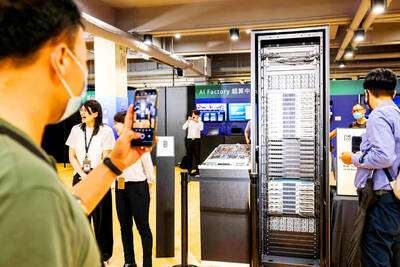Millions of European industrial jobs are under threat from China, India and other emerging economies as these countries combine growth in low-skill, low-wage manufacturing with an expanding presence in innovative, hi-tech sectors, two EU reports warned.
They challenged the assumption that Europe could offset its loss of traditional manufacturing jobs by retaining a lead in knowledge-based industries and exporting higher-value goods to emerging economies.
"China is emerging as the most competitive manufacturing platform ever," a European parliament study said.
Launching plans to upgrade R&D in the EU, Janez Potocnik, science and research commissioner, said research investment in China is growing by 20 percent a year while that in Europe is stagnating. The share of Chinese GDP devoted to R&D is growing 10 percent annually while in the EU it is rising by 0.02 percent.
"If we think that the competition from emerging economies such as China and India is simply about low wages and manufacturing, then we are kidding ourselves," Potocnik said.
"These countries are also competing with us in hi-tech, high-skilled sectors because they are investing more and more in research and innovation. And, yet, as they catch us up, we are still lagging behind our traditional competitors such as the US and Japan," he added.
A report adopted by the parliament's international trade committee and drafted by Caroline Lucas, a Green MEP, said Europe's textiles industry, under siege this summer in the so-called "bra wars," could lose 1,000 jobs a day.
"China is also fast developing competitive advantage not only in footwear, machine components and autos but also in hi-tech goods. This is a systemic challenge, not a one-off sectoral one," it said.
Lucas urged the commission to investigate the extent to which the "China price" -- using economies of scale to produce goods for 30percent to 50 percent less -- is affecting EU industries, examine the level of existing offshoring and identify sectors that will be under threat in the future.

LIMITED IMPACT: Investor confidence was likely sustained by its relatively small exposure to the Chinese market, as only less advanced chips are made in Nanjing Taiwan Semiconductor Manufacturing Co (TSMC, 台積電) saw its stock price close steady yesterday in a sign that the loss of the validated end user (VEU) status for its Nanjing, China, fab should have a mild impact on the world’s biggest contract chipmaker financially and technologically. Media reports about the waiver loss sent TSMC down 1.29 percent during the early trading session yesterday, but the stock soon regained strength and ended at NT$1,160, unchanged from Tuesday. Investors’ confidence in TSMC was likely built on its relatively small exposure to the Chinese market, as Chinese customers contributed about 9 percent to TSMC’s revenue last

With this year’s Semicon Taiwan trade show set to kick off on Wednesday, market attention has turned to the mass production of advanced packaging technologies and capacity expansion in Taiwan and the US. With traditional scaling reaching physical limits, heterogeneous integration and packaging technologies have emerged as key solutions. Surging demand for artificial intelligence (AI), high-performance computing (HPC) and high-bandwidth memory (HBM) chips has put technologies such as chip-on-wafer-on-substrate (CoWoS), integrated fan-out (InFO), system on integrated chips (SoIC), 3D IC and fan-out panel-level packaging (FOPLP) at the center of semiconductor innovation, making them a major focus at this year’s trade show, according

DEBUT: The trade show is to feature 17 national pavilions, a new high for the event, including from Canada, Costa Rica, Lithuania, Sweden and Vietnam for the first time The Semicon Taiwan trade show, which opens on Wednesday, is expected to see a new high in the number of exhibitors and visitors from around the world, said its organizer, SEMI, which has described the annual event as the “Olympics of the semiconductor industry.” SEMI, which represents companies in the electronics manufacturing and design supply chain, and touts the annual exhibition as the most influential semiconductor trade show in the world, said more than 1,200 enterprises from 56 countries are to showcase their innovations across more than 4,100 booths, and that the event could attract 100,000 visitors. This year’s event features 17

Hon Hai Precision Industry Co (鴻海精密), which assembles servers for Nvidia Corp, yesterday said that revenue last month rose 10.61 percent year-on-year, driven by strong growth in cloud and networking products amid continued front-loading orders for artificial intelligence (AI) server racks. Consolidated revenue expanded to NT$606.51 billion (US$19.81 billion) last month from NT$548.31 billion a year earlier, marking the highest ever in August, the company said in a statement. On a monthly basis, revenue was down 1.2 percent from NT$613.86 billion. Hon Hai, which is also a major iPhone assembler, added that its electronic components division saw significant revenue growth last month, boosted